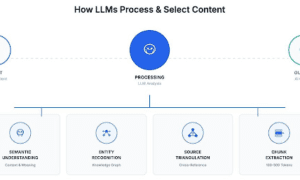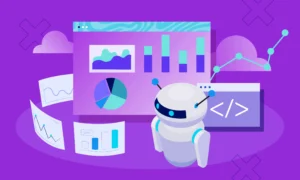Did you know that not having an MVP puts $50,000 at risk for creating the wrong product? Groove, a SaaS startup, experienced this. Lowering risks and saving money, time, and resources are vital reasons to prioritize MVP development. MVPs came first for Uber, Zappos, Facebook, Spotify, Instagram, Snapchat, Airbnb, and Dropbox. Read on to discover typical MVP development errors and best practices.
You can evaluate necessary, optional, and unsuitable functions for the initial release in multiple ways. Let’s explore the top two techniques for choosing the right MVP features.
Value vs. Complexity Quadrant: A Key Practice
To illustrate, consider an MVP example using a food delivery app. A successful small pizzeria chain aims to create an app for online food orders. Starting with the MVP, the owner identifies these intuitive MVP features:
- User’s personal cabinet for quick reorders.
- A menu detailing pizzas, sauces, drinks, etc.
- Delivery tracking for order location.
- In-app chat with customer service.
- Integrated in-app payments.
- Pizza lovers’ social network.
- ERP system integration for order processing.
The business owner collaborates with the newly hired development team to review the project concept and select features using the Value vs. Complexity Quadrant.
Source: productplan.com
- Personal Cabinet: Simple but lacks significant business value. Priority: Low value, minimal effort – lower left corner.
- Menu: Highly crucial and relatively simple. Priority: High value, low effort – upper left bottom.
- Delivery Tracking: Challenging to develop and not highly desired by typical customers. Priority: Minimal value, high effort – lower right bottom.
- Chat with Customer Service: Straightforward to build and beneficial. Priority: Minimal value, low effort – bottom left.
- In-App Payments: Can use third-party solutions like Stripe or Braintree for a positive user experience. Priority: Maximal value, low effort – upper left bottom.
- Social Network: Time-consuming with unclear business value. Priority: Low value, high effort – lower right corner.
- ERP Integration: Complex but crucial for efficient order processing. Priority: Maximal value, high effort – upper right.
Three essential MVP features are the menu, in-app payments, and ERP integration. Estimating effort and value falls to the product owner and business analyst. Each feature’s business value and implementation complexity must be evaluated. MVP development should focus on features with high business value and low complexity in terms of the efforts and resources required. Features with high value but significant effort are better suited for future product scaling. Conversely, features with low business value and high effort can fail.
Weighted Scoring Technique
Using weighted scoring is another effective approach to prioritize features correctly. Develop a scoring system for feature value, assign numerical values to each function, and calculate the cumulative score. Features with higher scores hold greater importance. The MVP should incorporate features with the highest scores. Applying this method, the pizzeria owner and their team would obtain the following outcome for the same features.
With the available budget, they can prioritize implementing the three most valuable aspects: menu, in-app payments, and ERP integration.
Successful MVP Development Scenario
For a successful MVP scenario, consider W2 (initial funds for the software team), W1 (remaining funds upon market entry), T1 (first release time), T2 (time to regain W2 level funds), and T+ (point of profitability initiation).
The ideal product launch scenario unfolds as follows: The pizzeria owner’s viable idea was supported by thorough market research, both on the business and software development fronts. The MVP has been launched, actively receiving feedback and generating initial revenue. Initially, user adoption might be slow, causing some uncertainty for the owner during the stress period on the graph. However, this doubt is usually dispelled as the app progressively becomes profitable and surpasses the stress period.
The more widely accepted and frequently used features are incorporated, the quicker cash flow will begin for the product owner. This results in a shorter stress period. A proficient software team aims to create a product that minimizes the time between T1 and T2. Moreover, the period before T1 shouldn’t be excessively long, as rapid market entry within budget is crucial.
Failed MVP Scenario
In some cases, startups face failure due to a multitude of reasons. For instance, the product owner might lose faith in the product and terminate operations well before funds run dry. Incorrect initial business requirements can result in the absence of a positive trajectory and incoming cash flow. As previously noted, selecting inappropriate features and an unsuitable team are among the leading three causes of startup failure. The graph illustrates a situation where the startup’s funds have been exhausted.
Once you’ve analyzed the market and chosen appropriate MVP features, ensure the dedicated software development team you’ve selected is skilled. It’s not just about choosing the right functions; it’s equally important how these functions are executed. The experienced analysts not only implement client business requirements but also conduct in-depth analyses to create an optimal scenario.
MVP Development Services: How to Estimate and Profit from Your Idea
Keep in mind that the “V” in MVP stands for “Viable.” Don’t launch into the market with an unfinished, irrelevant product that your target audience won’t find valuable. To avoid this, consider partnering with a dependable software development company equipped with skilled IT experts who can transform your idea into a profitable product.
Stages of MVP Development with a professional software team:
- Consulting and analysis: Approach a software vendor with your idea for project estimation. Business analysis involves defining the product concept, MVP functionality, cost-benefit analysis, performance, and security requirements.
- Building a dedicated team: The software company selects a specialized development team tailored to your project’s needs. This team might include project managers, business analysts, software developers, QA engineers, and IT consultants.
- MVP software development: The development team concentrates on creating essential features for your target audience within a short timeframe. This phase encompasses MVP coding and UX/UI design, utilizing technologies such as .NET, Java, Node.js, PHP, Laravel, Ruby on Rails, iOS, Android, and more.
- MVP software testing: The experienced QA team rigorously tests your MVP software version, utilizing methods like Stress Testing and Load Testing to ensure scalability and data handling capabilities. That results in a functional MVP accompanied by relevant documentation.


































